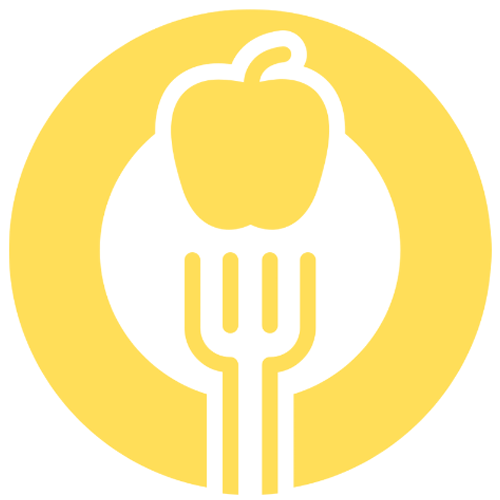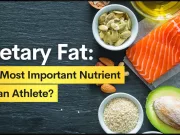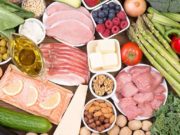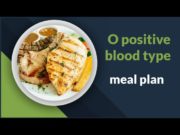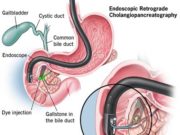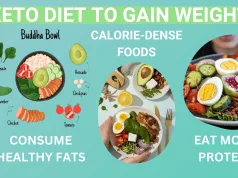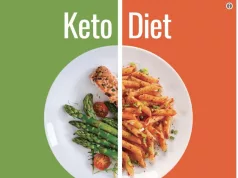What is the best diet to lose belly fat? It’s a question many ask, seeking the magic formula to shed those stubborn pounds around their midsection. While there’s no one-size-fits-all answer, understanding the different types of belly fat, the factors contributing to its accumulation, and the principles of a balanced diet are key to achieving sustainable results.
This guide explores the science behind belly fat loss, delving into dietary strategies, specific food choices, the importance of hydration and exercise, and lifestyle modifications that can help you achieve your goals. We’ll also discuss the importance of consistency, patience, and setting realistic expectations for a successful journey towards a healthier, leaner you.
Understanding Belly Fat
Belly fat, also known as visceral fat, is a type of fat that accumulates around your internal organs. While some fat is essential for healthy body function, excessive belly fat can pose significant health risks.
Types of Belly Fat
Belly fat is not a single entity but comprises two distinct types: visceral and subcutaneous fat.
- Visceral fat: This deep fat resides within your abdominal cavity, surrounding your vital organs like the liver, pancreas, and intestines. Visceral fat is more metabolically active and can easily release fatty acids into the bloodstream, contributing to health issues.
- Subcutaneous fat: This type of fat sits just beneath your skin, acting as a protective layer. While subcutaneous fat is generally considered less harmful than visceral fat, excessive accumulation can still contribute to health problems.
Factors Contributing to Belly Fat Accumulation
Several factors can contribute to belly fat accumulation, including:
- Genetics: Some individuals are genetically predisposed to storing more fat in their abdominal region.
- Age: As we age, our metabolism slows down, making it easier to gain belly fat.
- Hormonal changes: Hormonal fluctuations, particularly during menopause in women, can lead to increased belly fat storage.
- Lack of physical activity: A sedentary lifestyle reduces calorie expenditure, contributing to fat accumulation, including belly fat.
- Poor diet: A diet high in processed foods, sugary drinks, and unhealthy fats can promote belly fat accumulation.
- Stress: Chronic stress can lead to increased cortisol levels, which can trigger fat storage, particularly in the abdominal area.
- Sleep deprivation: Lack of sufficient sleep can disrupt hormone balance, leading to increased appetite and cravings for unhealthy foods, ultimately contributing to belly fat gain.
Lifestyle Habits Contributing to Belly Fat Gain
Specific lifestyle habits can significantly contribute to belly fat gain.
- Overeating: Consuming more calories than your body needs leads to excess energy storage, often in the form of belly fat.
- High-sugar intake: Sugary drinks and processed foods contribute to increased insulin resistance, leading to fat accumulation, particularly around the abdomen.
- Excessive alcohol consumption: Alcohol provides empty calories and can disrupt hormonal balance, promoting belly fat storage.
- Lack of sleep: Insufficient sleep can increase hunger hormones and reduce satiety hormones, leading to overeating and belly fat gain.
Dietary Strategies for Belly Fat Loss
A balanced diet is crucial for losing belly fat and maintaining overall health. It involves consuming a variety of nutrient-rich foods in appropriate portions, while managing calorie intake and expenditure. This approach promotes healthy weight loss, improves metabolism, and reduces the risk of chronic diseases.
The Role of Calorie Intake and Expenditure
Calorie intake refers to the number of calories consumed through food and beverages, while calorie expenditure represents the number of calories burned through physical activity and basic bodily functions. To lose belly fat, it is essential to create a calorie deficit, meaning burning more calories than you consume. This can be achieved by reducing calorie intake, increasing physical activity, or a combination of both.
A calorie deficit of 500 calories per day can lead to a weight loss of approximately 1 pound per week.
For example, if you consume 2,000 calories per day and burn 2,500 calories, you will create a calorie deficit of 500 calories, leading to a weekly weight loss of about 1 pound.
Sample Meal Plan
A sample meal plan that focuses on nutrient-rich foods and portion control can be a helpful guide for weight management:
Breakfast
* 1 cup oatmeal with 1/4 cup berries and 1/2 cup low-fat milk
* 2 scrambled eggs with 1/2 cup spinach and 1 slice whole-wheat toast
* 1 cup Greek yogurt with 1/4 cup fruit and 1/4 cup granola
Lunch
* 1 cup lentil soup with a side salad
* 2 cups mixed greens salad with grilled chicken breast, 1/4 cup chickpeas, and 1 tablespoon olive oil dressing
* 1 tuna salad sandwich on whole-wheat bread with 1/2 cup vegetable sticks
Dinner
* 4 oz grilled salmon with 1/2 cup brown rice and 1 cup steamed vegetables
* 1 cup vegetarian chili with 1 whole-wheat cornbread
* 1 cup lentil pasta with 1/2 cup marinara sauce and 1/2 cup steamed broccoli
Snacks
* 1/4 cup trail mix
* 1 piece of fruit
* 1/2 cup low-fat cottage cheese
This sample meal plan provides a balanced intake of carbohydrates, proteins, and healthy fats, while also focusing on portion control. Remember that individual calorie needs may vary based on factors such as age, activity level, and overall health. Consulting a registered dietitian or a healthcare professional can help determine a personalized diet plan that aligns with your specific needs and goals.
Specific Food Choices for Belly Fat Loss
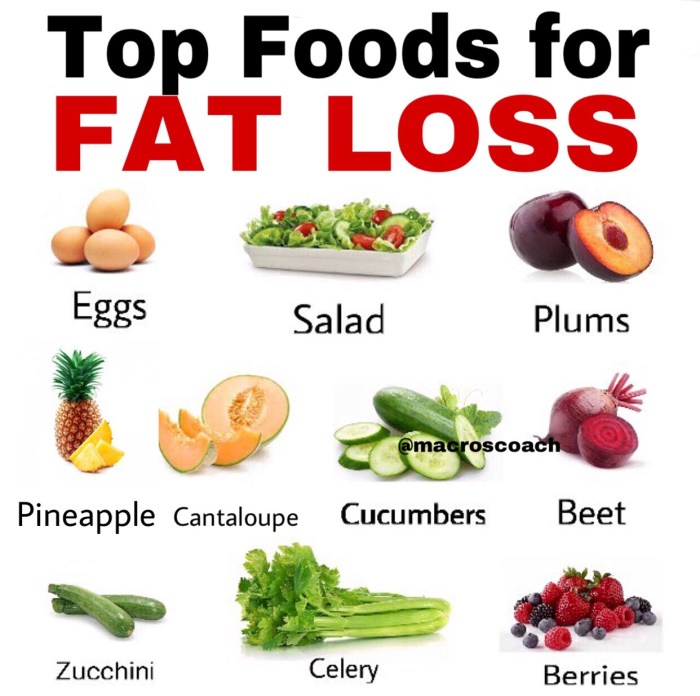
Making smart food choices is crucial for shedding belly fat. Beyond just restricting calories, prioritizing certain nutrients and food groups can significantly impact your progress.
Protein-Rich Foods for Belly Fat Loss
Protein is a key player in belly fat reduction. It promotes satiety, meaning you feel fuller for longer, preventing overeating. Protein also boosts metabolism, helping you burn more calories throughout the day.
- Lean meats: Chicken breast, turkey, fish, and lean beef are excellent sources of protein. Aim for grilled, baked, or roasted preparations to minimize added fat.
- Eggs: Eggs are a powerhouse of protein and other nutrients, including choline, which is important for liver health.
- Dairy: Greek yogurt, cottage cheese, and low-fat milk provide protein and calcium, contributing to bone health.
- Legumes: Beans, lentils, and chickpeas are excellent plant-based protein sources, also rich in fiber.
- Nuts and Seeds: Almonds, walnuts, chia seeds, and flaxseeds offer protein, healthy fats, and fiber.
High-Fiber Foods for Belly Fat Loss
Fiber is essential for gut health and weight management. It adds bulk to your meals, promoting satiety and slowing down digestion. This helps regulate blood sugar levels and prevent spikes that can lead to fat storage.
- Fruits: Apples, pears, berries, and oranges are packed with fiber.
- Vegetables: Broccoli, spinach, Brussels sprouts, and carrots are excellent sources of fiber. Aim for a variety of colors to maximize nutrient intake.
- Whole grains: Brown rice, quinoa, oats, and whole-wheat bread provide fiber and complex carbohydrates for sustained energy.
- Legumes: Beans, lentils, and chickpeas are rich in both protein and fiber, making them a versatile addition to your diet.
The Impact of Different Fats on Belly Fat
Not all fats are created equal. While healthy fats are essential for overall health, some can contribute to belly fat accumulation.
- Unsaturated Fats: Found in olive oil, avocados, nuts, and fatty fish, these fats are beneficial for heart health and can help reduce belly fat.
- Saturated Fats: Present in red meat, butter, and full-fat dairy, these fats should be consumed in moderation. Excessive intake can contribute to belly fat.
- Trans Fats: Found in processed foods, fried foods, and baked goods, these fats are particularly harmful and should be avoided altogether. They can increase belly fat and raise bad cholesterol levels.
Hydration and Belly Fat Loss
Staying hydrated is crucial for overall health and plays a significant role in weight management, especially when it comes to reducing belly fat. Water is essential for various bodily functions, including metabolism, digestion, and nutrient transport.
Water Intake and Weight Management
Adequate water intake can help regulate appetite and prevent overeating. When your body is properly hydrated, it sends signals to the brain that you are full, reducing the likelihood of consuming excess calories.
Incorporating Water-Rich Foods
Including water-rich foods in your diet can help you stay hydrated and support your weight loss goals.
- Fruits: Watermelon, cucumber, strawberries, and oranges are excellent sources of water and essential nutrients.
- Vegetables: Leafy greens like spinach and kale, as well as cucumbers and celery, are naturally hydrating.
- Soups and stews: Broth-based soups and stews can provide hydration and satiety, helping you feel fuller for longer.
Hydration and Metabolism
Water is essential for boosting metabolism and promoting fat burning.
“Drinking water can temporarily increase your metabolic rate, helping your body burn more calories.”
Exercise and Belly Fat Loss
Regular exercise plays a crucial role in reducing belly fat and improving overall health. It complements a healthy diet by burning calories, boosting metabolism, and building muscle mass. Engaging in a balanced workout routine that combines cardiovascular exercise and strength training is highly effective in targeting belly fat.
Sample Workout Routine
A sample workout routine that combines cardio and strength training can be followed 3-4 times a week:
- Cardio: 30 minutes of moderate-intensity cardio, such as brisk walking, jogging, cycling, or swimming.
- Strength Training: 2-3 sets of 8-12 repetitions for each exercise, targeting major muscle groups like legs, chest, back, shoulders, and arms. Examples include squats, lunges, push-ups, rows, and bicep curls.
This routine can be adjusted based on individual fitness levels and goals.
Benefits of Exercise for Reducing Belly Fat
Regular exercise offers numerous benefits for reducing belly fat and improving overall health:
- Increased Calorie Burn: Exercise helps burn calories, contributing to a calorie deficit, which is essential for weight loss.
- Improved Insulin Sensitivity: Exercise enhances insulin sensitivity, allowing your body to utilize glucose more efficiently and reducing the storage of excess fat, particularly around the abdomen.
- Reduced Stress Levels: Exercise releases endorphins, which have mood-boosting effects and help reduce stress, a key factor in belly fat accumulation.
- Increased Metabolism: Regular exercise boosts metabolism, increasing the number of calories your body burns at rest, leading to long-term weight management.
Exercise and Muscle Mass
Exercise, particularly strength training, helps build muscle mass. Increased muscle mass boosts metabolism, as muscles burn more calories at rest than fat tissue. This means that even when you’re not exercising, you’ll be burning more calories, contributing to fat loss, especially around the abdominal area.
Lifestyle Modifications for Belly Fat Loss
Lifestyle changes play a crucial role in belly fat reduction, working in conjunction with diet and exercise. Making these adjustments can contribute significantly to your overall health and well-being, promoting a sustainable approach to weight management.
Stress Management and Belly Fat
Chronic stress can lead to increased cortisol levels, a hormone that promotes belly fat storage. Effective stress management strategies can help mitigate this effect and support your weight loss goals.
- Practice relaxation techniques: Techniques like deep breathing exercises, meditation, or yoga can help calm your mind and reduce stress levels.
- Engage in enjoyable activities: Spending time on hobbies, pursuing interests, or connecting with loved ones can help you de-stress and improve your overall mood.
- Prioritize sleep: Adequate sleep is essential for stress management and hormone regulation, contributing to better weight control.
- Seek professional support: If stress is overwhelming, consider seeking professional help from a therapist or counselor.
Sleep and Weight Management
Getting enough sleep is vital for weight management, as it influences hormone levels, appetite regulation, and energy expenditure.
- Aim for 7-9 hours of sleep: This range is generally recommended for adults to ensure adequate rest and optimal hormone balance.
- Establish a regular sleep schedule: Going to bed and waking up around the same time each day helps regulate your body’s natural sleep-wake cycle.
- Create a conducive sleep environment: A dark, quiet, and cool room can promote better sleep quality.
- Avoid caffeine and alcohol before bed: These substances can interfere with sleep patterns and disrupt your sleep cycle.
Regular Physical Activity and Belly Fat Reduction
Regular exercise is essential for overall health and plays a significant role in reducing belly fat.
- Engage in at least 150 minutes of moderate-intensity aerobic activity: This could include brisk walking, cycling, or swimming.
- Include strength training exercises: Building muscle mass helps boost metabolism and burn more calories even at rest.
- Find activities you enjoy: This will make it easier to stick to your exercise routine and make it a sustainable part of your lifestyle.
- Gradually increase intensity and duration: Start with a manageable level and gradually increase the intensity and duration of your workouts as you get fitter.
The Importance of Consistency and Patience: What Is The Best Diet To Lose Belly Fat
Losing belly fat is a journey, not a sprint. It requires a long-term approach that involves consistent effort and patience. It’s not about quick fixes or drastic measures; it’s about sustainable changes that you can maintain over time.
Setting Realistic Goals
Setting realistic goals is crucial for maintaining motivation and preventing discouragement. Aim for gradual weight loss of 1-2 pounds per week. This approach is healthier and more sustainable than trying to lose weight too quickly.
“Remember, slow and steady wins the race.”
Making Gradual Changes
Start by making small, manageable changes to your diet and exercise routine. For instance, swap sugary drinks for water, incorporate more fruits and vegetables into your meals, and start with short walks or gentle exercises. As you become more comfortable, you can gradually increase the intensity and duration of your workouts.
“Small changes, big results.”
Staying Consistent
Consistency is key to achieving your belly fat loss goals. Even small, consistent efforts over time can make a significant difference. Don’t get discouraged if you have setbacks or slip-ups. Just get back on track as soon as possible and continue to make progress.
“Consistency is the key to success.”
Patience is a Virtue, What is the best diet to lose belly fat
Losing belly fat takes time and effort. Be patient with yourself and celebrate your progress along the way. It’s essential to focus on the journey and the positive changes you’re making, rather than solely on the end goal.
“Patience is a virtue.”
Final Summary
Ultimately, losing belly fat is a journey, not a destination. It requires a commitment to making sustainable changes to your diet and lifestyle. By understanding the science behind belly fat, embracing healthy habits, and staying consistent, you can achieve a healthier, more balanced body and feel your best.
General Inquiries
Is it possible to target belly fat specifically?
While you can’t spot-reduce belly fat, overall weight loss through diet and exercise will lead to a reduction in belly fat as well.
What are some common myths about belly fat loss?
Some common myths include: “You can lose belly fat by doing crunches,” or “Eating fat makes you fat.” It’s important to rely on evidence-based information.
How much belly fat is considered unhealthy?
The amount of belly fat that is considered unhealthy varies based on individual factors, but a waist circumference of over 35 inches for women and 40 inches for men is generally considered a risk factor for health problems.
There isn’t one “best” diet for losing belly fat, as individual needs and preferences vary. However, a balanced approach focusing on whole foods, portion control, and regular exercise is key. If you have diabetes, it’s important to consult a healthcare professional to create a personalized plan, as the best diet to lose weight for diabetics may differ from a general weight loss plan.
Ultimately, achieving a healthy weight and reducing belly fat requires consistency and a commitment to a lifestyle change.
There’s no one-size-fits-all answer to what’s the best diet for losing belly fat, as it depends on individual factors like metabolism and lifestyle. However, many people find success with a balanced approach that emphasizes whole foods, portion control, and regular exercise.
Some popular diet plans, like the Golo diet, focus on managing insulin levels to help with weight loss. If you’re curious about how it works, you can learn more by checking out this article: how does golo diet work.
Ultimately, the best diet is the one you can stick to consistently, so find a plan that fits your preferences and goals.
While there’s no one-size-fits-all answer to the question of the best diet for losing belly fat, focusing on a healthy, balanced approach with plenty of protein and fiber is key. But if you’re following a ketogenic diet, you might wonder can you drink diet soda on keto ?
Ultimately, the best diet for belly fat loss is one you can stick to long-term, so find what works for you and your lifestyle.


